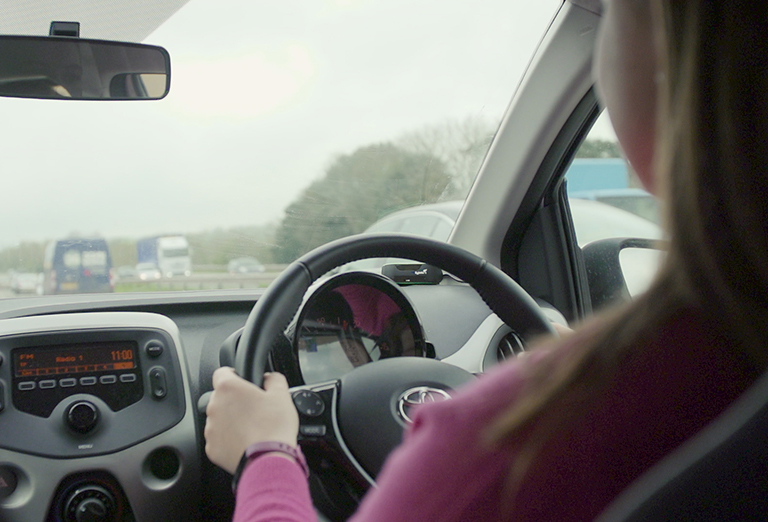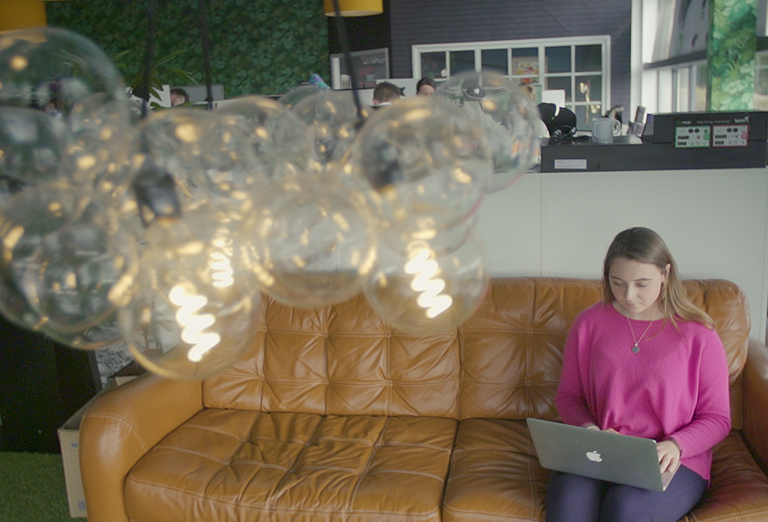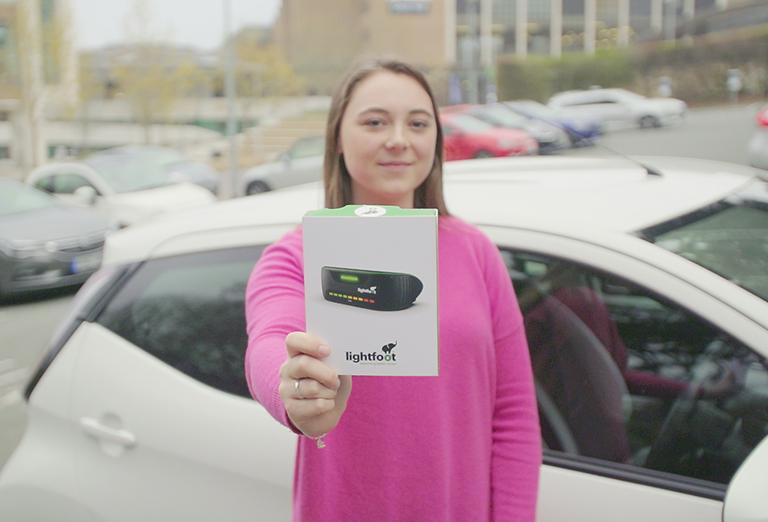Green consultancy: My Lightfoot experiment
Francesca joined us on a two-week Green Consultancy internship from the University of Exeter in April 2019. Studying Geography, Francesca has a keen awareness of the impact lifestyle choices have on the planet. For the fortnight she joined us at Innovation Valley, Francesca worked on developing and profiling our Breathe Exeter initiative, along with learning more about Lightfoot as a business and product. The results of her research and involvement are detailed here.
Thank you, Francesca, for joining the Lightfoot family – you were a massive help and a pleasure to have around. We hope to see you again soon!
Currently, 82% of the UK population make efforts to recycle, whilst 28% of us have purchased a reusable coffee cup in an attempt to reduce our carbon footprint. So, why wouldn’t we also make a change from our usual driving habits in order to be more sustainable?
As a geography student at the University of Exeter, I know about the impacts that we are having on the environment through our unsustainable lifestyle choices and, like most people, I could do more to improve the efficiency of my driving.
Working with Lightfoot under the green consultancy internship has given me the opportunity to learn more about the device by using it for myself and gaining information about my own personal impact on the environment and how I can change this.
Good news and bad news
Now, bear with me here. Although it might seem boring, the science is staggering and frankly can’t be ignored (not by a geography student anyway).
There is huge scientific and academic consensus about the human contribution to climate change, combined with the need to do something to improve our behaviour.
The bad news is that the transport sector contributes to 14% of global emissions. This is equivalent to almost 7 Gigatons of CO2 emitted every year (where 1 Gigaton is equal to 1 million metric tons and 1 ton is equal to 1000kg), making transport the third biggest contributor to global carbon dioxide emissions.
In addition to this, almost all of the energy for transport comes from fossil fuels – you know, those things which contribute to the warming of our planet and the globally-destructive impacts we hear about on the news every day?
This leads me to question: why aren’t we doing more about it? Although some progress has been made, there is a lot more to do before we can conclude that our behaviour has made a significant difference.
The good news is that individual action at a wider scale has proven to be incredibly successful in improving sustainability practices in the past. For example, the ReFill campaign now works with 15,000 locations (including 1,100 in the South West) to fill up reusable bottles with tap water. This gives individuals, working collectively, the chance to prevent 5 million plastic bottles being used.
The environmental differences that can be achieved through changing our lifestyles and habits are huge but highly dependent on the long-term commitment of individuals, like me and you.

Why Lightfoot?
The European Commission explains that road transport accounts for over 70% of Europe’s transportation emissions. The need to be proactive in adapting the way we drive is now more important than ever.
The ultimate goal would be to not use cars at all but, when this is not possible, a shift towards low-emission, fuel-efficient driving habits is the next best solution. Installing Lightfoot encourages these changes, simultaneously decreasing emissions and improving the safety of its users.
Breathe Exeter
Living in Exeter, I am conscious of the local level at which environmental issues have already had an impact. Road transport is the main cause of air pollution in cities, as has been demonstrated by the fact that a number of Exeter’s streets have surpassed the minimum government emissions levels.
Lightfoot’s initiative, Breathe Exeter, aims to get 10% of the cars using Exeter’s roads fitted with Lightfoot by the end of 2019. Achieving this will directly reduce emissions in the city, indirectly improving local environmental conditions and the wellbeing of the community.
This allows Exeter to be an example for the South West, as well as for other cities across the country, of how communities can decrease their transport emissions by changing driving behaviours. Personally, and through the lens of my green consultancy internship, this makes a lot of sense. More information about the project can be found here.
In addition, Breathe Exeter is also working collectively with Exeter City Futures to achieve one of its twelve goals, ‘Clean Air for Exeter’. Lightfoot is just one approach to how this goal is being met throughout the city, with many other companies and organisations involved in the ambitious plan. Please see this webpage for more information about Exeter City Futures and how you can get involved in helping them achieve their goals.

What’s in it for me?
As an individual, you can have more of an impact on the environment than you might think. In fact, your opportunity to make a difference is huge.
Our Little Planet
If I haven’t spoken about it enough already, the environmental difference achieved by Lightfoot is significant. The emissions reduced by having Lightfoot installed in my car for one year will have the same effect as planting and growing two trees. This demonstrates the environmental difference which could be made by concentrating efforts on a single city, from a small change in behaviour over daily journeys.
Although this is important, the significance of Lightfoot becomes evident through community involvement and large-scale application. For example, if every driver in Exeter got involved, we could save the same amount of carbon dioxide as planting 104,074 trees. Imagine the environmental success we could achieve if everyone in the UK did this!
Money, money, money
Another positive about using Lightfoot is the ability to save on fuel. The average UK household spends £21 a week on fuels for transport. After installing Lightfoot in my car, the difference in fuel savings accumulated to almost £90 a year. For me, this is equivalent to over two tanks of fuel and therefore a saving I would not want to miss out on.
This is a considerable improvement considering that the journeys I used in the experiment were under 30 minutes and that, before installing Lightfoot, my driving was already efficient (to my surprise!). A longer journey time, combined with a greater increase in Lightfoot score, would mean a greater individual saving. Some Lightfoot drivers are saving up to £200 a year in fuel alone.

Conclusions
One thing that stood out for me during my green consultancy internship was the increased awareness I had of how to improve the efficiency of my driving through using the Lightfoot device. I would never know if I was driving efficiently before having Lightfoot installed, but having access to that information allows me to see my score and improve upon it.
From my own personal experience, I can see that there are multiple benefits to having a Lightfoot device installed in your car. Removing the device from my car would mean that I would miss out on long-term fuel savings and environmental benefits. Having access to this is a real deciding factor in encouraging me to keep using Lightfoot in the future.
I would also like to thank Lightfoot for giving me the opportunity to complete my green consultancy internship with the business. It was great to learn more about this innovative company and how it can lead the way in sustainable transport solutions in the South West and even further afield.
Full source data is available upon request. Please email marketing@lightfoot.co.uk if you wish to view it.